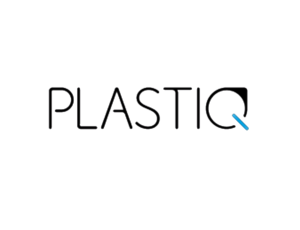The Netherlands’ central bank
put SEPA high on its priority list for 2011, in an attempt to
increase awareness among businesses, particularly SMEs. However,
many Dutch businesses and banks see the new credit transfers and
direct debits as inferior versions of products they already have,
writes William Cain.
 The Netherlands
The Netherlands
is one of the EU’s most advanced payments markets, with high levels
of electronic payments usage among corporates.
One of the key measures of
efficiency scrutinised by De Nederlandsche Bank (DNB), the Dutch
central bank, is the ratio of electronic funds transfers to
paper-based transfer forms. This currently runs at around 95%, up
from 86.7% in 2000.
One third of all transactions at
the point of sale are made using cards. The last cheque
transactions in the Netherlands were phased out in 2001 and the
payments system features high levels of electronic payments among
businesses and consumers.
Payments are centrally processed by
the Dutch-German automatic clearing house Equens and are settled
within one or two hours on average.
How well do you really know your competitors?
Access the most comprehensive Company Profiles on the market, powered by GlobalData. Save hours of research. Gain competitive edge.

Thank you!
Your download email will arrive shortly
Not ready to buy yet? Download a free sample
We are confident about the unique quality of our Company Profiles. However, we want you to make the most beneficial decision for your business, so we offer a free sample that you can download by submitting the below form
By GlobalDataOne of the key priorities for the
DNB this year is the switch to SEPA credit transfers and direct
debits. The European Commission has proposed – the end-dates have
still not been confirmed – the deadlines for implementation
 should be
should be
end-2012 for credit transfers and 2013 for direct debits.
The main challenge in the
Netherlands is raising awareness of SEPA, which is low according to
DNB research, particularly among small and medium-sized enterprises
(SMEs).
Around 24% of SMEs interviewed in
autumn 2010 said they understood what SEPA involved and the
implications for their payments processes.
8% of SMEs know about SEPA
advantages
In a more recent survey, conducted
in spring this year, the figure actually declined, to 16%, when
asked the same question. Only around 8% of all SMEs interviewed by
DNB in its 2011 research said they had a general or complete idea
of what SEPA meant for them.
SMEs with international operations,
or those which said they regularly made cross-border payments,
typically understood the requirements much better than
domestic-focused businesses.
Around a third of SMEs with
international operations understood what SEPA involved. They also
had more detailed knowledge of what the changes were likely to
entail, including the need to adjust creditor account numbers and
XML files.
 In total, 83% of
In total, 83% of
the SMEs in the Netherlands do not know when they will switch to
SEPA-compliant credit transfers. Only around 3% of Dutch SMEs have
already migrated.
The survey also includes findings
on mid-sized companies – those with between 200 and 999 employees.
In this bracket, understanding and awareness is higher.
Some 58% of mid-sized businesses
knew what SEPA involves and 45% had a general or complete picture
of the changes they would need to make.
Mid-sized companies’ responses
included reference to more specific changes required by the
migration to SEPA-compliant payments products. These included
adjusting internal payment and accounting systems, stating their
international bank account number (IBAN) and bank identifier (BIC)
codes on invoices and company stationery.
Improving awareness, particularly
at the smaller end of the business spectrum, is a key priority for
the DNB according to Anneke Kosse, a policy adviser at the central
bank.
Kosse says the DNB is trying to
facilitate engagement between SMEs, banks and information and
communication technology providers to provide them with the right
information.
The DNB has set up a body called
the National Forum on SEPA Migration (ASN) to monitor the process
and promote this engagement. The ASN is also running a national
awareness and information campaign for businesses to educate them
about the required changes to their payments processes and software
systems.
“The Dutch central bank gives high
priority to the migration to SEPA products in the Netherlands,”
says Kosse.
“With the SEPA regulation in sight
– which is now under preparation – extra efforts are necessary to
get all of the stakeholders involved in a timely way.
“Last July, our National Forum on
the Payment System set up the National Forum on SEPA Migration to
ensure an efficient and smooth transition to SEPA instruments in
the Netherlands.
“An important condition is that we
keep our existing efficiency in the reconciliation process of all
mass payments. Banks, clearing and settlement mechanisms, firms and
other users are very keen on keeping the existing efficiency and
speedy timelines.”

Higher
standards
One of the quirks of SEPA for
countries with more advanced payments systems, like the
Netherlands, is that the standards for credit transfers and direct
debits are lower than those that currently exist within the
country.
This may explain the lack of
interest in SEPA even among those who are expected to be the
biggest beneficiaries – the country’s large corporates. Dutch
corporates and public bodies surveyed by the DNB in Spring 2011
said they were “largely neutral” regarding the potential impacts of
SEPA on their businesses.
The majority of corporates see the
SEPA initiative as a regulatory and compliance issue rather than an
opportunity to streamline their payments processes.
Banks in particular consider the
new products a step backwards compared those already available in
the Dutch market because they are not settled on a same-day basis.
The lack of uptake among businesses and banks may also be because
the process is being driven by regulation rather than market
forces, according to Equens senior product manager Tom Wijnen.
“The large corporates are already
developing these new SEPA products,” Wijnen says.
“The smaller sized businesses –
SMEs, they are not very involved in SEPA migration at the moment.
There is a concern from Dutch banks that the process, at least at
the moment, is not really market driven.
“It is very much a regulation that
is going to be in place. EU regulations will be adapted and that
will be the moment when most corporates will start worrying about
their payments.
“In the Netherlands we are used to
same-day processing. It doesn’t matter if you have a direct debit
or a credit transfer – it goes from one bank to another within a
day.
“That is now changing because the
SEPA credit transfer allows for a day or a day-plus-one. With the
SEPA direct debit you have to deliver D-5 or D-2. That’s five days
or two days in advance of the real settlement and processing of
those direct debits [compared to the same day under the Dutch
system], so that is quite a difference.”
The key to a successful migration
will be to marry the efficiencies of the Dutch payments system with
the extra functionality that SEPA-compliant products will be able
to provide, according to Wijnen.
The migration process will require
some investment but it should produce systems where corporates are
able to combine all of their transactions and salary payments in a
single file to a processor that can ultimately handle, process and
distribute them all to multiple banks.
This type of standardisation is
particularly beneficial to large, internationally-focused companies
that will benefit from simplification in their cross-border
payments systems.
However, the findings of research
conducted by the Dutch central bank, titled the SEPA Migration
Monitor, shows that businesses and public bodies are “in
general neutral” in their attitudes to the likely impact of SEPA
changes on their businesses.

Corporate
apathy
This apathy among corporates may
change in the longer term, according to Wijnen. Currently,
corporates are more focused on operating issues than on their
payments systems.
They have typically taken one of
two approaches to SEPA integration. For some, it is viewed entirely
as a regulatory requirement and strategies are put in place to
comply with the new rules in as cost effective a way as
possible.
One of the biggest requirements in
doing this is integrating IBAN and BIC coding into their payments
instructions processes, which are the standard formats for the
SEPA-compliant products.
The Netherlands Bankers’
Association launched a service in 2009 which would help corporates
to achieve this. The service provides an online and automated
telephone service which enables Dutch businesses to update batch
files of basic bank account numbers with corresponding IBANs and
BICs.
The alterative strategy is for
corporates to use SEPA as an opportunity to overhaul their European
payments operations. This type of strategy will allow corporates to
centralise their treasury functions and payments administration
departments in one European location, rather than maintaining
fragmented teams and multiple banking relationships across a number
of different geographies.
Companies in the Netherlands like
Ikea are considering this kind of option in the future, according
to Huib Klarenbeek, head of strategy at processor Equens.
“In the current environment you can
already see some movement in this direction,” says Wijnen.
“Large-scale, multi-presence
companies like Ikea are interested in consolidating on their
multiple domestic positions and benefit, most obviously, in the
area of cash management.
“I think it will happen. But it
takes a lot of vision within the corporate and I don’t think it is
a top priority at the moment. I think it will pick up but not in
the short term.”
Corporates, as well as
municipalities and public bodies are the most aware of the arrival
of SEPA, according to research conducted by the DNB. Large
corporates and public bodies are also the most advanced with regard
to their migration plans.
Around 67% of the Netherlands’
corporates are in the process of making specific preparations for
SEPA credit transfers or can already make compliant payments. Of
the corporates which are not already undergoing specific
preparations which took part in the survey, 66% plan to start
during the course of 2011.
Around 29% of Dutch corporates are
already able to make SEPA-compliant credit transfers. The majority
of these, 71%, use SEPA transactions only for cross-border payments
while the remaining 29% use them for both domestic and cross-border
payments.

How far to go?
Banks in the Netherlands have also
been considering whether to simply comply or use SEPA to develop a
longer term, more integrated strategy for their payments
business.
Netherlands headquartered Rabobank,
the largest building society in the world, is working with
Belgium-headquartered Clear2Pay on a project it has called Payments
2015.
René Steenvoorden, the bank’s chief
information officer, believes an integrated approach to payments
needs to go beyond SEPA and involves the creation of more flexible
systems which are able to adapt to changing customer and
legislative requirements.
This is vital for banks which, like
Rabobank, want to serve corporate clients across borders.
“For us, Payments 2015 is a very
large initiative; it is sponsored by all lines of business from
wholesale to SME and corporate, private and retail banking,”
Steenvoorden is quoted as saying in a Clear2Pay white paper.
“IT plays a big part, but the key
is our commercial proposition,” Steenvoorden adds.
“We aim to be a long-term stable
financial partner and financial logistics provider to our clients
and as such we need a broad set of all finance products.
“We do not have to be the largest
payments provider. But we must be delivering the promise of an
excellent customer relationship and in terms of payments our
interests run parallel.
“For our customers, payments – or
in their words ‘financial flow’ – is a must-have lifeline. Things
like cash management and treasury start with an excellent payments
provider and the system has to work seamlessly at both ends.”
Developing a fully SEPA-compliant
solution, however, requires Rabobank to operate two payments
systems: its existing Dutch operations and another for the
pan-European, or SEPA, environment. This will add significant
costs.
As well as banks, processors are
increasingly moving into the corporate payments environment because
of their ability to offer cross-border payments services and
SEPA-compliance to banks.
Equens is one such business
treading the tightrope between servicing banks in the Netherlands
on one hand and competing for their much-loved corporate clients on
the other. Head of strategy Klarenbeek says it is a natural
evolution of the market.
“Obviously I feel that, whereas
Equens in the past was mainly focused on banks and financial
institutions, we will see a shift in the coming years to a focus on
more direct relationships with corporates,” Klarenbeek says.
“It will not happen overnight or in
all countries at the same time because the banking environments in
the different countries are very much different to each other.
Gradually, we are preparing to offer our services directly to
corporates or merchants.
“At the same time we are not
looking to get in to trouble with our existing clients. It is not
our goal to win these segments over banks. Yes, we are preparing to
become active in these new segments.”
Part of this shift was recognised
in July, when Equens signed an agreement with the salary payments
and human resources provider Raet – the biggest company of its kind
in the Netherlands – to migrate its payment systems to SEPA.
The agreement covers the majority
of the market for Dutch salary payments, marking a big step forward
in SEPA-compliancy among large and mid-sized businesses on salary
payments, and demonstrating the speed at which Equens is able to
deliver SEPA compliance to business clients.
The agreement should also help
Dutch corporates with foreign subsidiaries benefit from cost
savings because they will be able to submit their salary payment
requirements in a single file to Equens.
The file is submitted via an
internet portal or an XML message and can include a number of
different batches for businesses with multiple banking
relationships. Then, Equens arranges the authorisation, splits the
file and sends it either to the back office of the different banks
or directly to the clearing settlement mechanism.
“Raet does a lot of salary payments
for corporates in the Netherlands,” says Klarenbeek. “They have
12,500 businesses who they provide salary payment services to. If
we provide corporate payment services with them and with the banks,
we have a big step forward in the migration.
“The only thing that then needs to
be done is to make sure the payments are sent in the correct
format. For that, we need the software suppliers to have their
software ready.”
Business payments
software
 Software
Software
suppliers are an important part of the delivery of SEPA-compliant
products because they need to deliver new packages to users to
enable the payments to be made in the correct formats.
Many have yet to develop packages
ready for the migration to SEPA but most remain confident they will
be ready on time. A DNB survey shows around 30% of the suppliers
spoken to as part of the research have yet to start developing
SEPA-compliant packages.
This is less of a concern for SMEs
which typically only use their bank’s internet banking platform for
making payments. It is more relevant among the mid-size and large
corporates which are much heavier users of software packages as
part of their payments processes.
Around 87% of mid-sized businesses
use software packages for processing payments.
Larger corporates and state
institutions also have high usage of software packages from
vendors. As well as the use of third party products, 38% of
corporates and 27% of public bodies develop part of their internal
payments software internally.
The DNB survey asked businesses and
state departments which software suppliers they typically used.
German technology vendor SAP was the most popular provider of these
software services. It was the biggest provider of payments software
systems to mid-sized businesses, large corporates and public
bodies.
The second most popular response
among large corporates was their own internal systems, followed by
Clear2Pay.
The most popular provider of
software for SMEs was their bank, followed by a company called
Unit4 and another called Exact.
Vendors not
compliant
While the leading providers in these
categories have generally established SEPA-compliant software
solutions – Clear2Pay’s SEPA in a Box solution and SAP’s Payment
Engine – many others have not, according to DNB.
All of the 47 software suppliers
surveyed by the DNB understand what SEPA involves but many have yet
to build specific software for SEPA-compliant payments.
The DNB research shows around 28%
had packages available for SEPA credit transfers, 30% have not
taken any action. The remaining 42% are in the process of
developing software.
On SEPA direct debits, which has a
later deadline, there has been less progress. Only around 17% have
ready made solutions for these payments.
The slow pace of the development of
these solutions is attributed to uncertainty over SEPA end-dates –
which have still yet to be set in stone – and a lack of
understanding of the full requirements.
Other software companies say they
are waiting for specific request from clients before making
changes.
The majority of the work done by
businesses of all sizes around SEPA has focused on the nearest of
the two upcoming deadlines – the one for credit transfers. Far less
has been done regarding direct debits.
Only one corporate of the group
surveyed by DNB is currently able to make payments using
SEPA-compliant direct debits (this represents 5% of the corporates
included in the survey).
There has been some progress made
in this area, however. Only 16% of large corporates have not yet
made any action of SEPA direct debit migration compared to 27% in
2010.
Most of the large corporates and public bodies interviewed by
DNB said they expected to meet the current end-dates.








